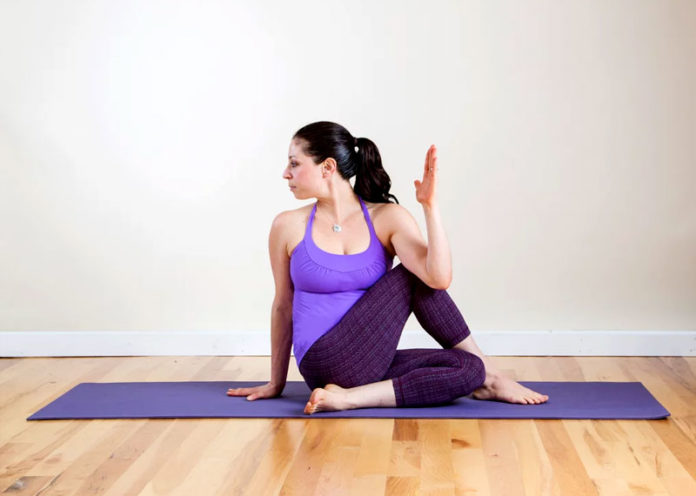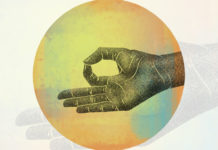Affiliate Disclaimer
Some links in this article are affiliate links. We may earn a small commission if you make a purchase through these links, at no extra cost to you. We only recommend products we find useful to our readersWhen people think about yoga, they mostly think of physical exercises and meditations and they are not all wrong. As this what we see of people practicing everywhere. ‘Hatha’ yoga on the other hand is a physical branch of the ancient Indian philosophy that mostly focuses on building a sound mind and body and achieving the goal of inner peace and happiness. This yoga branch is basically concerned with regular practice of ‘hatha’ yoga ‘asanas’ (Postures), ‘dhyana’ (meditation) and ‘Pranayama’ (controlled breathing).
‘Asanas’ or postures are basically physical exercises that mostly focus on strengthening or curing specific parts of the body. There are postures for every part of the body and there are in fact over 200 ‘asanas’. They mostly accompanied by ‘pranayama’ or controlled breathing. There are also many different types of ‘pranayama’. These physical exercises are usually preliminary to ‘dhyana’ or meditation, which involves you to focus on the mind in particular to achieve inner peace.
Hatha yoga encompasses different types of yogas such as vinyasa, restorative and power yoga. No matter which kind of yoga you can practice with controlled breathing, they are all the core component of hatha yoga. While holding yoga poses, breathe normally, don’t try holding your breath. Numbers of yoga poses are a subset of hatha yoga, which makes them the most basic and common practiced poses in yoga. Here are different types of hatha yoga poses, every beginner in yoga can try at home.
Types Of ‘Hatha’ Yoga
1‘Tadasana’ or Mountain pose

This pose can help you working on your posture. For this start standing with your feet together and relaxed shoulders. let your arms hand around your sides, try inhaling deeply and raising your hands over your head and your palms facing each other. Try reach towards the sky and holding for about thirty seconds to one minute and breath normally. Try exhaling as you lower your arms. ‘Tadasana’ or mountain pose is typically the starting pose for every starting position for other standing poses.
[Also Read- Yoga For Menstrual Disorder]
2‘Vriksasana’ or Tree pose

To try this pose stand on feet together and your arms at your sides. Try shifting your weight on your one leg, and bend your other knee, try placing the sole of your bending foot on the inside of your standing thigh. Try keeping your hips forward. When you are completely balanced, try moving your hands to a prayer position in front of the chest and your palms together but separate. Hold this position for 30 seconds and release slowly exhaling and lowering your arms. Repeat this in the same way in both the legs.
Note: if you are suffering from insomnia or migraine or high and low blood pressure must avoid this yoga.
3‘Uttanasana’ or Standing Forward Bend

To do this, pose stand in your mat with your feet hi-width apart. On slowly inhaling, extend your spine and then while slowly exhaling bend at the hips. If you can, then place your hands under the front of your each foot so that you can touch your toes. Try tucking your chin in and letting your shoulders relax away from ears. Try holding for 30 seconds to one minute, and then start slowly inhaling and come to the standing position.
Note: people who have back injury, or knee injury try avoiding this pose.
4‘Veerabhadrasana or Virabhadrasana’ or Warrior pose

There are three different types of warrior and warrior I is the most basic pose. Try beginning with mountain pose, later spreading your feet from three to four feet apart. Try turning your right foot out for at least 90 degrees. Later, while relaxing your shoulders, try extending your arms out to sides with your palms down. Try bending your right leg about 90 degrees, ensure that your knee doesn’t extend more over your ankle. Try looking over your right arm. Hold this position for one minute and later switch sides by repeating the same.
Note: avoid this if you have spinal cord injury or spinal cord disorder or might have recovered from chronic illness. Patients with high blood pressure or diarrhea can also avoid this.
[Also Read- Yoga For Flat Belly]
5‘Adho Mukha Shvanasana’ or Downward-facing dog pose

This pose is a part of sun salutation sequence. Mostly it works in every part of your body, and thus making it the most challenging position to hold for extended period of time. You can begin with your hands and knees, while spreading your fingers out on the mat. Try turning your toes under, slowly exhaling and lifting your knees up from the floor. You can keep the knees bend slightly and try mainly focusing on pushing your heels down the floor. Keep holding for one to three minutes and slowly bending your knees down on the floor slowly inhaling.
Note: avoid if you have high blood pressure or detached eye retina or carpel tunnel syndrome or dislocated shoulder or diarrhea or weak eye capillaries.
6‘Setubandha-sarvāgāsana’ or Bridge pose

Bridge poses can stretch the chest, spine and neck. To work on this pose, lie down on your back, with your knees bent and arms on your sides. The sole of the feet must be flat on the floor. Try moving your feet slowly as close to your glutes a much possible. While exhaling slowly, press your feet and arms into the mat and slowly start pushing your hips upward. Try clasping hand below the pelvis and slightly lifting your chin as well as pressing the shoulder blades down. Try holding the pose for 30 seconds to one minute and release on inhalation. Slowly roll down your spine on the floor.
Note: do not try if you have any neck or back injuries.
7‘Baddha Konasana’ or Bound Angle pose

‘Baddha Konasana’ or as they say in English Bound Angle pose is also known as Butterfly. To do this yoga, first sit on the floor, then try bending your knees and placing your feet together with the feet soles touching or facing each other. Try pulling your heels towards the pelvis and pressing the knees down to the floor. Sit straight and relax your shoulders while holding the pose for 30 seconds to one minute.
Note: try avoiding if you have knee or groin injury. Be careful if you have high blood pressure or cardiac problems. Also avoid during periods.
8‘Ardha Matsyendrasana’ or Seated Twist pose

Seated Twist can stretch your shoulders, back and hips with the increasing circulation and strengthening the oblique muscles. To perform this yoga, sit on the floor, with legs extended. Try crossing the right foot over the left thigh and placing it flat on the floor. Then try bending your left knee. Try moving your left arm outside of the right knee, so that the elbow can touch the thigh. Slowly twist your body to the right. Slowly release and switch sides by repeating the same.
Note: avoid this if you have lumber disc disorder or neck problems or shoulder or knee problems and injuries.
Remember that this yogas are for beginners to learn how to control breathing while doing yoga. So stay safe and healthy.
[Also Read- Rules For First Yoga Class]
By –

















































